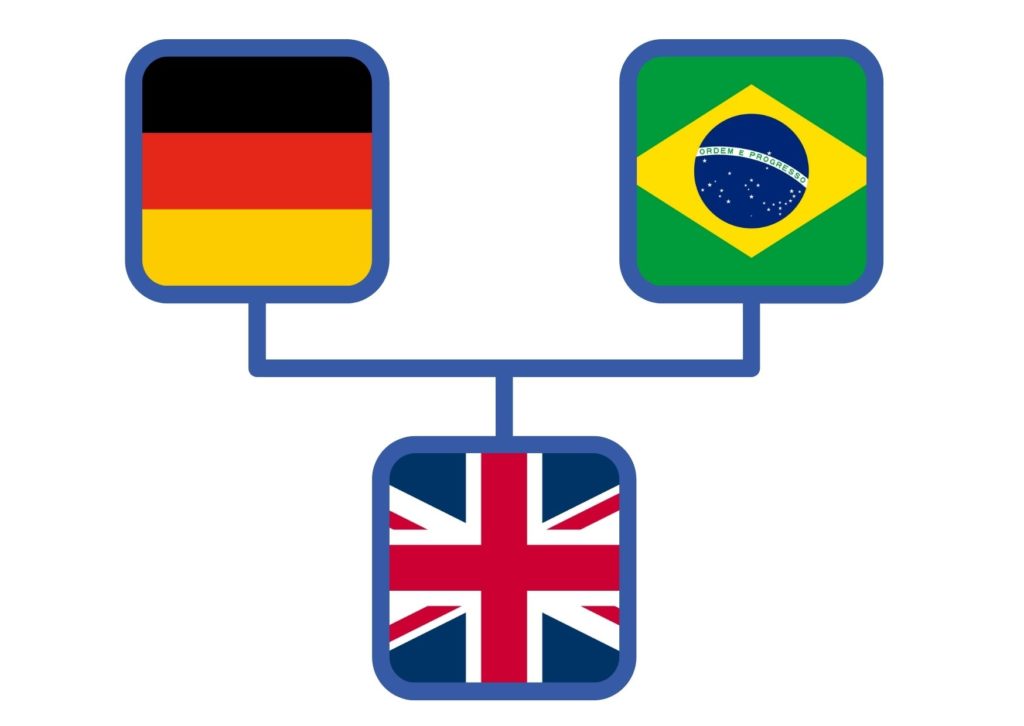How does Multilingualism Work at Picalike

For almost a year now, multilingualism has played a significant role at Picalike: a German-speaking team here in Germany, a Portuguese-speaking team in Brazil and, as common ground, the company language in the joint meetings is English. Three languages in one company – how does that work?
I asked our project manager Maik Kade, the interface between the teams! Spoiler alert: He has worked in the intercultural field for years, as you can see immediately from his answers!
Dear Maik, you speak German as your native language and both English and Portuguese at a very high level. However, not everyone at Picalike does. Could you explain in more detail how the communication between the development teams works?
Communication currently occurs in three languages: German, English and Portuguese. However, different communication situations must be distinguished here:
- Company-wide written documentation, for example, of tasks, technical details, problems and the like. In other words, everything that could be read now or in the future by any person and contains work-related information. This is all done in English.
- Written communication in the chat channel, which in our case is Slack. As long as the course of the communication is only relevant to the people writing to each other, and as long as all the people present in the channel can also use this language at a high skill level (B2 or more), the people involved are allowed to decide on the language used. Otherwise it is English.
- Meetings and real oral communication proceed in the same way as written chat communication. English is the default, unless everyone present speaks German or Portuguese at a high proficiency level.
What other moments are there when you have to choose a language? And how do you choose?
In addition to the communication examples already mentioned, there are also some special possibilities that I encourage the use of, if the situation allows it.
- In certain situations (mostly oral communication), it is possible to work purely on the receptive competencies. Linguistically proven and I think easy to understand for every foreign language learner is that the comprehension competence (reading/listening) is always higher orally and in writing than when performant (writing/speaking). Therefore, there are sometimes situations where we allow people to perform in their strongest performing language, if the comprehension skills of the conversation partners are high enough to follow a “native speaker”. This can compensate for deficits in competencies. With the help of an example, it becomes clearer: Person A speaks German very well, understands English well and Portuguese well. Person B speaks Portuguese very well, understands German well and little English. The best possible communication would then be that A speaks German and B Portuguese. And not what is often found in reality: Both speak English with each other, but have enormous communication problems.

- Whenever it is particularly difficult to understand each other or a topic is very sensitive, we have several people in the company who have a high level of proficiency in all three languages and can be asked to act as mediators/translators at any time. I myself am one of them. This helps the team a lot.
Employees are proficient in English at a wide range of levels. How does that work?
In general, communicating with each other in a non-native language is a great challenge, which is too often underestimated, especially in the case of English. After all, everyone speaks English today… right?
First of all, this is still a misconception, because especially in many non-European countries English does not automatically play an important role in education, or the quality of education can simply be insufficient. Brazil actually belongs to the latter case and “good” English is more the exception than the rule. And even in Europe, not everyone speaks English equally well.
Now, if people speak a language at different levels of competence, then for me there are three stages in the ability to communicate.
- The difference in language competence is so great that task- and problem-solving-oriented efficient communication is simply not possible.
- The difference is small, so that tasks/problems can be worked on together. But it is still large enough that the more linguistically competent person can often argue better than the other person due to his/her linguistic competence and therefore has an advantage in asserting him/herself that is not based on expertise.
- The difference is marginal and cases 1 and 2 do not occur. From now on, only pure personality and expertise count. And we all know that even that is not always easy.
Language is also a part of a culture. Do you also notice this in the communication within the company? Does a bit of wit sometimes get lost?
If that means culture/language-specific humor, then that certainly happens sometimes, although everyone in our company really makes an effort to translate such things directly and try to convey the culturally specific nature of a situation, a pun or a joke to the others. I think that’s great, because it at least promotes some of the intercultural competence of our international team.
But it would indeed be bad if this mutual information exchange did not take place. This can very quickly lead to the formation of groups by language and, in the worst case, to the exclusion/discrimination of individuals or cultural groups. I think that every company, that relies on internationally mixed teams, must make sure that there are qualified employees who monitor and train the communication within the company.
What are the benefits for the company of having multilingualism within the team?
From the company’s point of view, the extra effort required for communication monitoring and training, as well as generally longer communication times in some cases, can act as a deterrent. But interculturality can also bring considerable advantages.
- The first thing that always comes to mind is the concept of synergy. That is, the combination of individuals/teams that provides more than just additive value. This is made possible by people from different cultures working together. Because that always means: different ways of looking at tasks and problems, different working methods and, accordingly, a greater potential for solutions and progress in the company.
- And then there is also the constant search for suitable specialists or for personnel in general. If I don’t have to limit myself to just one country, then I have more options, or in some cases even any options at all.
- Last but not least, our employees feel at home in an international company precisely because they have the opportunity to work with people from other cultural backgrounds and also benefit personally from this exchange. This can bond a team and retain employees.
What advice would you give to a company that is in the process of implementing multilingualism?
The first is to deal with the challenges of multilingualism beforehand and also to admit your own lack of expertise and not just think, “It’ll work out, everyone knows English.” Unfortunately, when it comes to language, everyone thinks they have a say pretty quickly, but de facto, trained staff and preparation for the challenge are the keys to success.
Second: Realize that multilingual communication with each other means more time and it will certainly reduce team productivity in the beginning before the desired synergies kick in.
Thirdly, to be familiar with the CEFR (Common European Framework of Reference for Languages) in the European area, at least in the field of levels, as well as with the common examinations such as B2 for the professional, C1 etc. The still often used terms “business fluent, fluent, native speaker” are too vague and poorly measurable.
The levels according to the CEFR are that and describe very precisely what someone can do. They apply to all languages spoken in the EU. This helps with applicants and assessing the language compatibility of existing teams.
Fourth, help employees develop foreign language skills. There are so many options: Company courses, financial support for language courses, encouraging language exchange (tandem concept) in the company. And there is so much more!
Thank you very much for the elaborate answers!
If you have any further questions for him, don’t hesitate to write to us. Or have a look at our blog !
